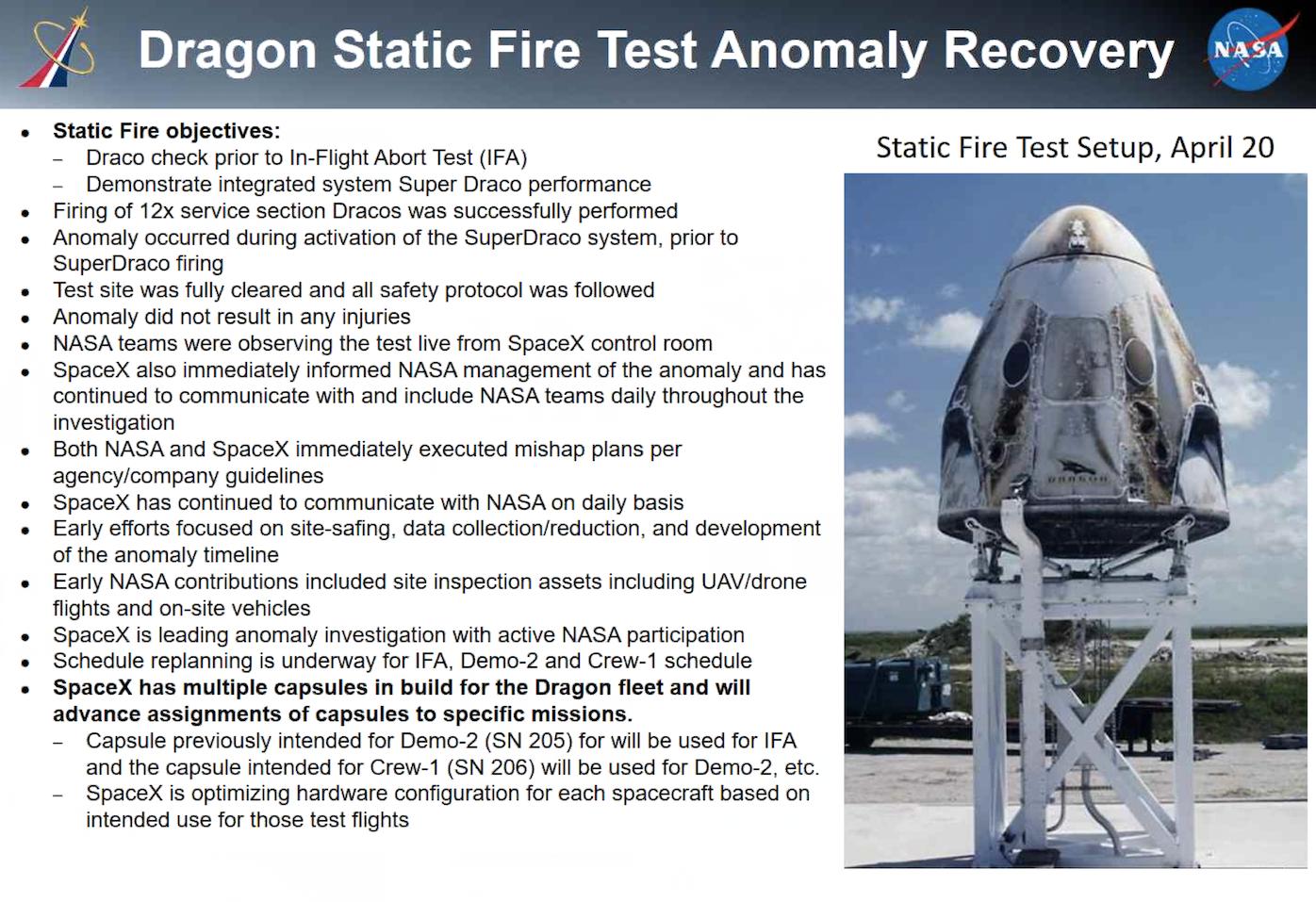We have to remember it was an undiscovered fuel system fault that killed Mars Observer way back in early 2000's. When they fired the pyro isolation valves to open the oxidizer and fuel tanks to ready its Main Engine for Mars Orbit Insertion the spacecraft exploded.
Post explosion analysis done on engineering copy that stayed here at home on Earth determined that mostly cause was some fuel had leaked thru the fuel tank isolation valve and had crept thru the system and was present in the oxidizer line, which caused the explosion when the valve to the oxidizer tank was opened.
I would not be surprised if the plumbing for Crew Dragon's abort motors and its RCS thrusters is under going a drastic redesign.
I feel having had this event occur during static testing is wake up call.
Rushing the production of any type of human carrying transport, be it Ground, Air or Space or taking short cuts to meet a schedule not a smart move. We found this out when Apollo One killed 3 astronauts during a prelaunch ground test.
I can imagine they (SpaceX and NASA) are looking at this very very, carefully and doing a LOT of testing.
.. and now to send Chill's down everyone's spine, with a parting thought.
IF CD-1 and CD-2 are identical as NASA did insist on Standardizing the Design and Freezing the Design at CD-1...
.....then CD-1 carried this fault into orbit, spent a few days docked to ISS and then returned to Earth with it..
... If the Super Draco's instead of the RCS system had been used for a quicker and shorter duratoin DeOrbit burn, this explosion could have happened in space.
Food for thought, Cheers, Hugh



